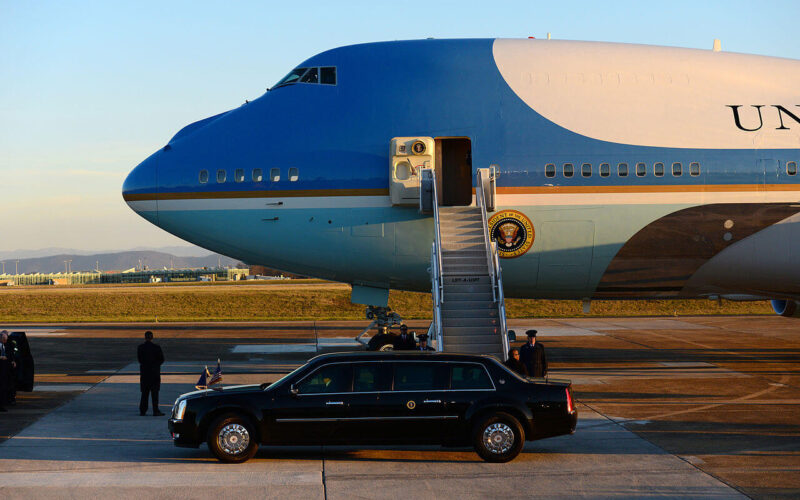From AeroTime Archives | This article was written and originally published on November 16, 2018.
If there is one aircraft as famous as the Pope, one name as recognizable as Coca Cola in the aviation world, it is the Air Force One. The sole mention of this plane is enough for most people to see its light blue, white and gold livery. Get to know the rock star of airplanes.
Etymology of a legend
The name Air Force One does not designate a plane in particular. It is in fact the call sign of any aircraft of the United States Air Force boarded by the President of the United States (POTUS). In this regard, every branch of the US military has its call sign: Navy One, Marine One, Army One and Coast Guard One. The same way, an aircraft carrying the Vice President alone takes the designation of Two (Air Force Two, Navy Two, etc…).
This has to do with the fact that every airborne trip of the POTUS is a military mission, carried out by the 89th Airlift Wing also known as the Presidential Airlift Group (PAG). Yes, even when Donald Trump flies to Scotland for a private golf trip.
Potentially, a Cessna 172 could be designated as Air Force One if the POTUS was to use it for transport. But if in popular culture, the presidential call signs are associated with specific aircraft, it is because those are nothing ordinary. And among them, the two Boeing VC-25 A currently being used as Air Force One are probably the most famous.
Strictly secured in Joint Base Andrews, 17km south east from Washington when the POTUS is in the White House, the planes always travel by two anywhere they go (the same goes for other presidential aircraft). This measure ensures the president always have a plane at his disposal if one of them were to be grounded. But in 27 years, that never happened.
Not just any Boeing 747
The VC-25A is a heavily modified Boeing 747. In the 1980s, the choice of Boeing 747 airframe did not come as surprising: it was already in use within the USAF for the E-4A Nightwatch (since upgraded to E-4B) , also known as the National Operations Airborne Center, which allows the Pentagon staff to operate from the skies.
With an extra tank that allows for an extended range of 1600km, the plane can stay airborne for 14 hours. That time can be extended to up to 72 hours as the plane has the capacity to be refueled by KC-135 tankers of the USAF. The plane is powered by four General Electric CF6-80C2B1 engines, with 56,700 pounds of thrust.
The cockpit has more to do with a fighter than an airliner. It has in fact the same Heads up Display (HUD) as an F-16 Fighting Falcon fighter jet. It allows for two people instead of three to man the aircraft (unlike the original Boeing 747). The similarities with a fighter do not stop there, as the plane is also equipped with advanced radar, a radar jam system, but also with flares and chaffs to protect it from incoming missiles. Supposedly, the VC-25A is also protected from the electromagnetic pulse (EMP) that would result from a nuclear strike. As for communications, the plane has 85 phones on board, most of them encrypted, as well as a similarly secured radio. It also features an Airborne Very Low Frequency (AVLF) system that allows the POTUS to talk to immersed submarines.
A flying palace
With its 4000 square feet of cabin, the VC-25 works as a flying White House that allows the POTUS to do anything he would do on the ground. It can transport up to 80 passengers. The crew of about 26 people includes cabin and flight crew, but also a doctor, several nurses and five cooks. Its two kitchens can serve up to 2,000 meals (which passengers have to pay for, at about $20 per trip). Additionally to the POTUS private quarters that includes a bathroom and a gym, Air Force One also houses a situation room, a medical room AND an operating room.
All those advanced amenities come with a cost: one hour of operating the aircraft costs the taxpayers $180,000. For domestic flights, or when the POTUS needs to land in smaller airports that could not house the VC-25A, four smaller aircraft known as C-32, based on a Boeing 757-200, is also available.
But with the Boeing 747-200B out of production, maintenance becomes more and more difficult. Since 2007, the USAF is studying a possible replacement for the VC-25As. On January 2015, it announced that they would be replaced by two 747-8s that should be delivered by 2024.

